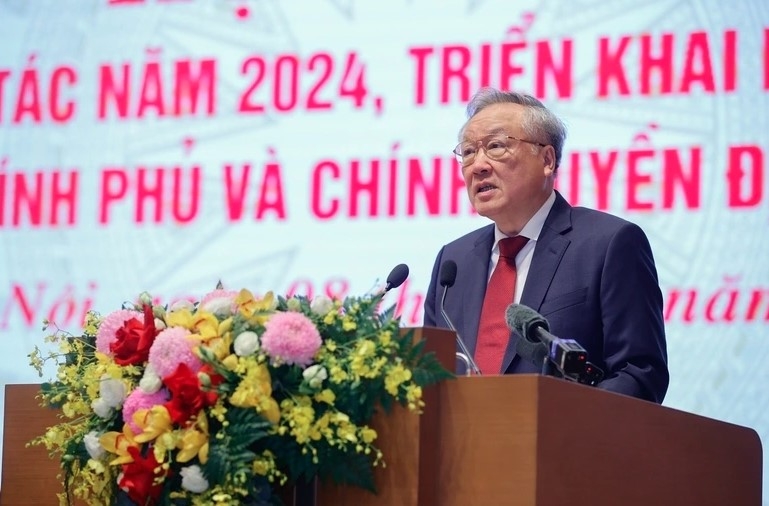All-out efforts to achieve over 8% growth in 2025
VOV.VN - Deputy Prime Minister Nguyen Hoa Binh has instructed the preparation for economic growth scenarios for 2025, targeting a growth rate of over 8%, or even 10% in gross domestic product (GDP) under favorable conditions.

This would lay the foundation, momentum, position, and confidence for double-digit growth during the 2026–2030 period.
At an online conference to review operations of the Government and local administrations in 2024 and outline tasks for 2025 held in Hanoi January 8, Deputy Prime Minister Nguyen Hoa Binh emphasized the theme for 2025: "Discipline and responsibility; proactivity and timeliness; streamlined and effective operations; accelerated breakthroughs."
Exceeding 8% growth rate
Deputy Prime Minister Nguyen Hoa Binh underscored the overarching objective of prioritizing growth promotion in conjunction with maintaining macroeconomic stability, controlling inflation, and ensuring major economic balances.
Key tasks include the immediate formulation of national and local economic growth scenarios for 2025, focusing on specific, breakthrough, feasible, and effective measures.
The target is to achieve a national growth rate exceeding 8%, or 10% under favorable conditions, to pave the way for double-digit growth during 2026–2030. "Key cities and growth hubs with significant potential and strengths must strive for growth rates exceeding the national average," emphasized the Deputy PM.
Aiming for credit growth above 15%
Deputy PM Binh also called for proactive, flexible, timely, and effective monetary policy management, harmoniously coordinating with a reasonably expansionary, targeted, and focused fiscal policy. Measures should focus on strengthening financial and capital markets, implementing decisive actions to upgrade Vietnam's stock market classification, enhancing credit quality, and striving for credit growth above 15%.
He further emphasized strict financial discipline and efficient State budget management, targeting State budget revenue in 2025 to increase by at least 10% compared to 2024. Expenditure should be minimized, especially regular expenses, to prioritize development investment.
Revitalizing traditional growth drivers
Deputy Prime Minister Binh highlighted key measures: accelerating public investment disbursement from the beginning of the year, developing the medium-term public investment plan for 2026–2030, limiting the number of projects to 3,000, resolutely recovering delayed projects and eliminating unnecessary ones, promoting public-private partnerships, and attracting selective foreign investment.
Other objectives encompass boosting domestic consumption, expanding international and domestic tourism to attract 120–130 million domestic tourists and 20 million international visitors by 2025, and maximizing the benefits of 17 existing free trade agreements (FTAs).
Vietnam also aims to explore emerging markets, such as Halal markets, Latin America, and Africa, while fostering innovation in science, technology, and digital transformation. By 2025, the nation aspires to rank among the top four ASEAN member states in e-government development.
Developing strategic infrastructure
The Deputy Prime Minister outlined ambitious infrastructure goals: completing 3,000 km of expressways and over 1,000 km of coastal roads by 2025, upgrading national telecommunications infrastructure, undersea fiber-optic cables, and promoting 5G commercialization, progressing on major projects, such as Long Thanh International Airport and high-speed railways.

Other priorities feature establishing international financial centers in Ho Chi Minh City and Da Nang, creating free trade zones in key economic regions, and ensuring sustainable energy supply by advancing renewable energy, hydrogen, and even nuclear energy projects.
Strengthening governance and social welfare
Finally, Deputy Prime Minister Binh underscored the importance of addressing hurdles in stalled projects, especially renewable energy and BOT projects, while ensuring transparency to combat corruption and wastage. The government will focus on enhancing budget management by increasing revenue, reducing expenditure, and allocating resources toward human development, social welfare, and sustainable investment.




